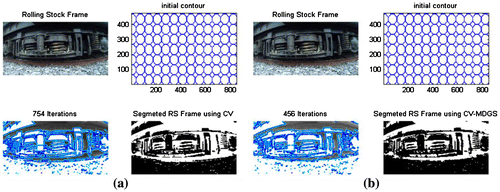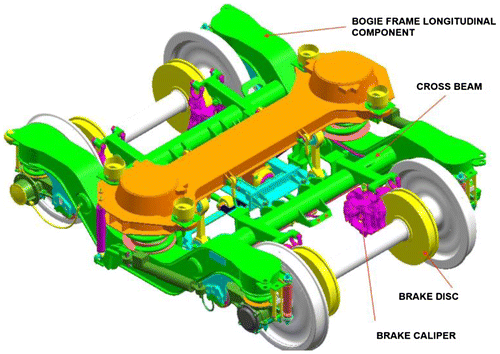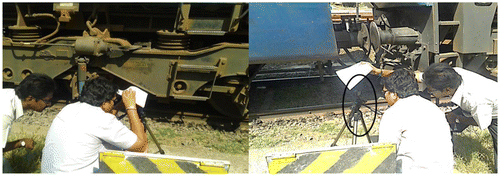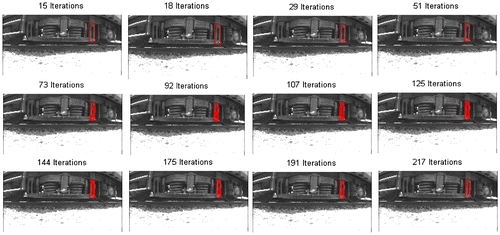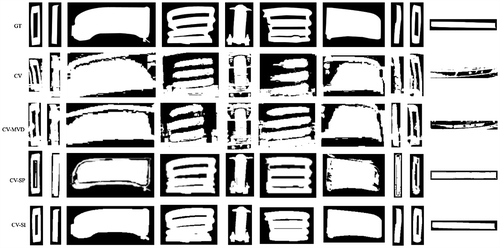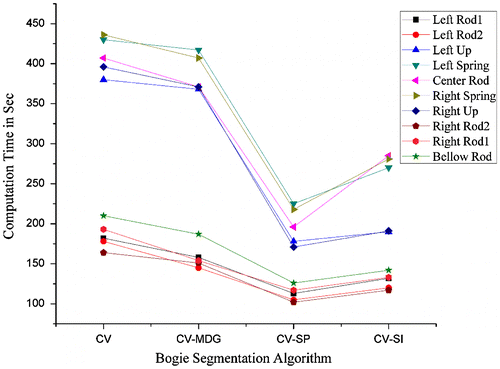Figures & data
Figure 3. Manned rolling examination with two persons stationed at either side of the moving train near a railway station.
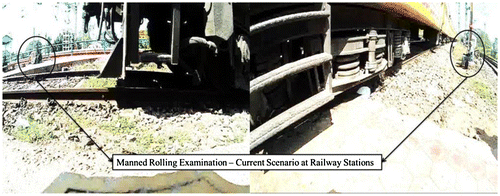
Figure 5. (a) Segmentation with CV model (Chan & Vese, Citation2001) and (b) Segmentation with CV with morphological differential gradient model.

Figure 11. Number of iterations and initial contours for the (a) CV algorithm segmentation and (b) CV-MDG algorithm of a rolling bogie frame.
